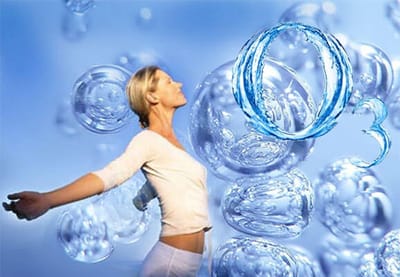OZONE TREATMENT

Ozone therapy affects a lot of different systems in your body, depending on how you get the ozone (more on that later). Here are some of the benefits of ozone therapy:
- Energy Production: Low doses of ozone lipoperoxides gently stress your mitochondria, making them stronger and more efficient at producing energy.
- Brain function: Lipoperoxides can cross the blood-brain barrier and reach your brain, which has a huge concentration of mitochondria.That could explain why ozone therapy helps people recover brain function after a stroke.Ozone therapy also increases blood flow to your brain, which will further boost your mitochondria.[4] I felt a dramatic and almost immediate improvement in my brain function after doing ozone therapy.
- Decreased Inflammation: It seems strange that flooding your body with free radicals decreases inflammation, but it’s true. The key is getting the right dose. Low levels of ozone stress your cells just enough to make them stronger; they produce glutathione and superoxide dismutase, two of the strongest antioxidants in the human body.Low-level ozone also activates heat shock proteins, the same anti-inflammatory proteins that turn on when you use a sauna.
- Faster wound Healing: Ozone speeds up wound healing, and is especially useful for chronic or treatment-resistant wounds.
- Anti-mold, antibacterial, antimicrobial, and antiparasitic effects. Ozone treatment started out as a way to sterilize drinking water. Researchers quickly realized that it also treats bacterial infections, even when bacteria are resistant to antibiotics,and kills parasites. Ozone completely removes toxic mold and mycotoxins as well. For many patients it might appear to be the only thing that help them to recover from toxic black mold exposure.
- Strong Teeth and Gums: The combination of antibacterial and anti-inflammatory benefits makes ozone a powerful way to upgrade your teeth and gums.
- Ozone is very effective in fighting Acinetobacter baumannii, Clostridium difficile and methicillin-resistant Staphylococcus aureus which becomes so important in ear of antibiotics resistance.
Conditions and diseases for which Ozone treatment would be beneficial:
- Diabetis mellitus and its complications (diabetic foot, diabetic polyneuropathy, brittle diabetes etc)
- Wound, burns and chronic ulcers
- For Hypercholesterolemia and lipid metabolism disorders
- In Cardiology for Ischemic heart disease, ischemic conditions, conditions after hypoxia
- In Neurology for Alzheimer disease, Parkinson disease, cerebral vascular disorders, post- ischemic brains, post-traumatic brains
- In Psychiatry: relief of general state with increased vitality, antidepressant action, improves sleep.
- In Immunodeficiency of various origins – cancer patients undergoing chemotherapy, in HIV patients, in patients with chronic debilitating diseases
- Endocrine, nutritional and metabolic diseases(Hyperthyroidism, Hashimoto disease, adrenal fatigue, mitochondrial deficiency)
- Overweight and obesity
- Chronic bacterial, viral and fungal infections
- Allergic conditions
- Malignant tumors – as adjuavant therapy
- Mould allergy
- Autoimmune disorders (Psoriasis, Rheumatoid Arthritis, Asthma, Urticaria and Pruritis (itching)
- In Gastroenterology (Ulcerative colitis, Crohn’s disease, IrritableBowelSyndrome, Haemorrhoids, anal fissures and fistulas)
- In Geriatrics: Ozone is considered an important therapeutic tool to enhance the quality of life of elderly patients with pneumonia, bronchial asthma, diabetes or hypercholesterolemia. Likewise, it increases cerebral oxygenation and improves symptoms of memory loss, bad circulation in legs and fatigue.
Treatments are quick and efficient, consist of a number of sessions which vary in quantity and duration, depending on the condition being treated. In average, the course of 10-12 sessions of Ozone therapy once or two times per week is recommended and has shown to be effective for symptoms relief. After the main course, sessions once- twice monthly for health support would be greatly beneficial. The entire procedure usually lasts around 30 min.
We use in our clinic the Protocols with Ozone concentrations depending on patient’ need and condition.The applications are very safe, as they have virtually no side effects.
The gas mixture of ozone oxygen can be applied in multiple ways:
- Locally through using a glass bell or plastic bag, according to the body part being treated (leg, arm, etc).
- Local injections either subcutaneous or intramuscular (Minor Autohaemotherapy)
- Major Autohaemotherapy, which consists of extracting the blood, mixing it with ozone- oxygenand without removing the needle, re-injecting it back into the bloodstream.
- Rectal Insufflation: it is performed by directly applying the gas through a thin tube, in an enema.
- Through creams and ointments in the form of Ozonated oils.


